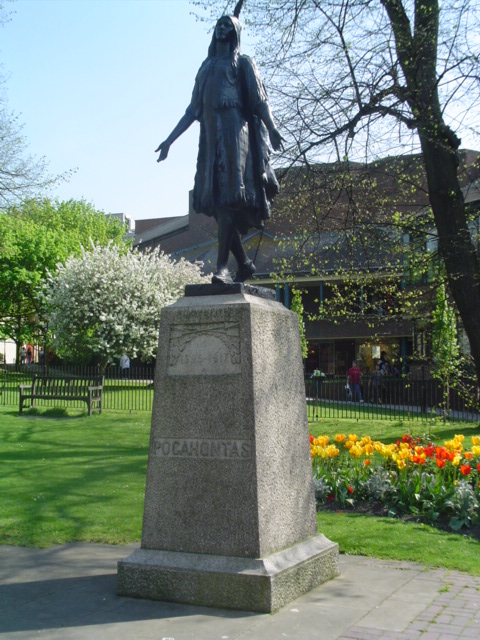St George's Church, Gravesend on:
[Wikipedia]
[Google]
[Amazon]

 St George's Church, Gravesend, is a Grade II*-listed
St George's Church, Gravesend, is a Grade II*-listed
Parish homepage
1731 establishments in England Churches completed in 1731 Church of England church buildings in Kent

 St George's Church, Gravesend, is a Grade II*-listed
St George's Church, Gravesend, is a Grade II*-listed Anglican
Anglicanism, also known as Episcopalianism in some countries, is a Western Christianity, Western Christian tradition which developed from the practices, liturgy, and identity of the Church of England following the English Reformation, in the ...
church dedicated to Saint George the patriarch of England, which is situated near the foot of Gravesend
Gravesend is a town in northwest Kent, England, situated 21 miles (35 km) east-southeast of Charing Cross (central London) on the Bank (geography), south bank of the River Thames, opposite Tilbury in Essex. Located in the diocese of Roche ...
High Street in the Borough of Gravesham
Gravesham ( ) is a local government district with borough status in north-west Kent, England. The council is based in its largest town of Gravesend. The borough is indirectly named after Gravesend, using the form of the town's name as it appear ...
. It serves as Gravesend's parish church
A parish church (or parochial church) in Christianity is the Church (building), church which acts as the religious centre of a parish. In many parts of the world, especially in rural areas, the parish church may play a significant role in com ...
and is located in the diocese of Rochester
The Diocese of Rochester is a Church of England diocese in the English county of Kent and the Province of Canterbury. The cathedral church of the diocese is Rochester Cathedral in the former city of Rochester. The bishop's Latin episcopal si ...
in Kent
Kent is a Ceremonial counties of England, ceremonial county in South East England. It is bordered by Essex across the Thames Estuary to the north, the Strait of Dover to the south-east, East Sussex to the south-west, Surrey to the west, and Gr ...
, England.
Burials
Pocahontas
Pocahontas (, ; born Amonute, also known as Matoaka and Rebecca Rolfe; 1596 – March 1617) was a Native American woman belonging to the Powhatan people, notable for her association with the colonial settlement at Jamestown, Virginia. S ...
, Native American wife of English-born colonist John Rolfe
John Rolfe ( – March 1622) was an English explorer, farmer and merchant. He is best known for being the husband of Pocahontas and the first settler in the colony of Virginia to successfully cultivate a tobacco crop for export.
He played a ...
, died in Gravesend on her way back to North America at age 20 or 21 and was buried under the chancel of this church on 21 March 1617. When the church was rebuilt in 1731, the exact spot was lost. William Ordway Partridge's bronze
Bronze is an alloy consisting primarily of copper, commonly with about 12–12.5% tin and often with the addition of other metals (including aluminium, manganese, nickel, or zinc) and sometimes non-metals (such as phosphorus) or metalloid ...
statue commemorates her.
After the Battle of Culloden
The Battle of Culloden took place on 16 April 1746, near Inverness in the Scottish Highlands. A Jacobite army under Charles Edward Stuart was decisively defeated by a British government force commanded by the Duke of Cumberland, thereby endi ...
in 1746, the many Jacobite Army POWs who died because of the inhumane conditions aboard the prison hulks anchored off Gravesend in the River Thames
The River Thames ( ), known alternatively in parts as the The Isis, River Isis, is a river that flows through southern England including London. At , it is the longest river entirely in England and the Longest rivers of the United Kingdom, s ...
are believed to have been buried as "unknowns" in what was then the unconsecrated area of St. George's Cemetery. The most well known such burial is that of former non-combatant
Non-combatant is a term of art in the law of war and international humanitarian law to refer to civilians who are not taking a direct part in hostilities. People such as combat medics and military chaplains, who are members of the belligerent arm ...
military chaplain
A military chaplain ministers to military personnel and, in most cases, their families and civilians working for the military. In some cases, they will also work with local civilians within a military area of operations.
Although the term ''cha ...
and Roman Catholic Martyr
A martyr (, ''mártys'', 'witness' Word stem, stem , ''martyr-'') is someone who suffers persecution and death for advocating, renouncing, or refusing to renounce or advocate, a religious belief or other cause as demanded by an external party. In ...
Fr. Alexander Cameron, the younger brother of Donald Cameron of Lochiel
Donald Cameron of Lochiel ( – 26 October 1748), popularly known as the Gentle Lochiel, was a Scottish Jacobitism, Jacobite, soldier and Scottish clan chief, hereditary chief of Clan Cameron, traditionally loyal to the exiled House of Stuart. ...
. Thomas Wynne (2011), ''The Forgotten Cameron of the '45: The Life and Times of Alexander Cameron, S.J.'', Print Smith, Fort William, Scotland
Fort William is a town in the Lochaber region of the Scottish Highlands, located on the eastern shore of Loch Linnhe in the Highland (council area), Highland Council of Scotland.
At the 2011 United Kingdom census, 2011 census, Fort William had ...
. Pages 89-91.
References
External links
Parish homepage
1731 establishments in England Churches completed in 1731 Church of England church buildings in Kent
Saint George
Saint George (;Geʽez: ጊዮርጊስ, , ka, გიორგი, , , died 23 April 303), also George of Lydda, was an early Christian martyr who is venerated as a saint in Christianity. According to holy tradition, he was a soldier in the ...
Grade II* listed churches in Kent
Diocese of Rochester
Jacobite rising of 1745
Pocahontas
{{England-Anglican-church-stub